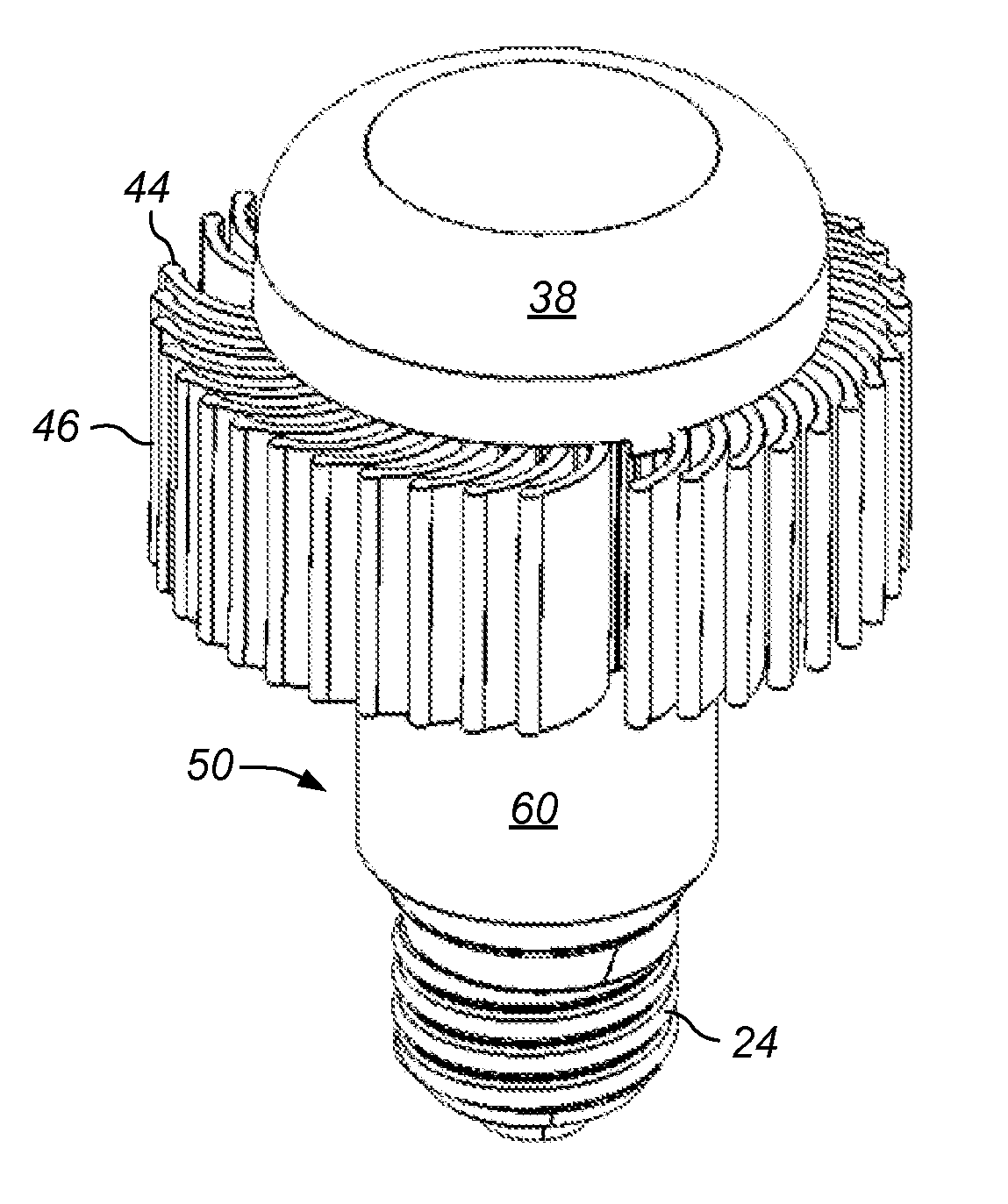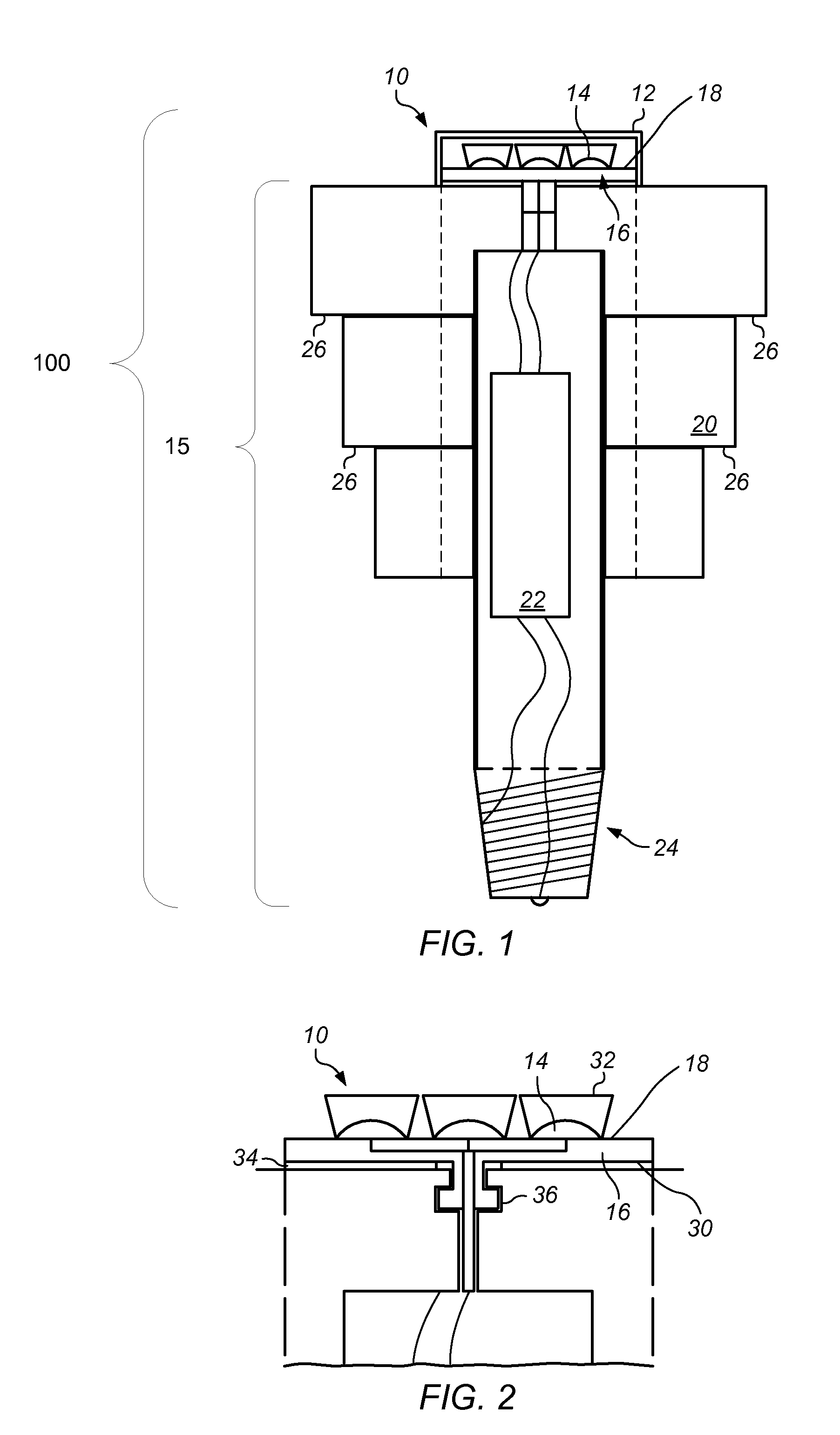Thermal Management of a Lighting System
a lighting system and thermal management technology, applied in the field of solid-state lighting replacement, can solve the problems of inconvenient lighting installation, inconvenient lighting installation, and inability to meet the needs of lighting users, etc., and achieve the effects of reducing the cost of installation
- Summary
- Abstract
- Description
- Claims
- Application Information
AI Technical Summary
Benefits of technology
Problems solved by technology
Method used
Image
Examples
Embodiment Construction
INCORPORATION BY REFERENCE
[0068]The following references are hereby incorporated by reference in their entirety as though fully and completely set forth herein:
[0069]U.S. Provisional Patent Application No. 61 / 275,401 titled “Lighting Device, Features, And Manufacturing Methods,” filed on Aug. 28, 2009.
Terms
[0070]The following is a glossary of terms used in the present application:
[0071]Memory Medium—Any of various types of memory devices or storage devices. The term “memory medium” is intended to include an installation medium, e.g., a CD-ROM, floppy disks 104, or tape device; a computer system memory or random access memory such as DRAM, DDR RAM, SRAM, EDO RAM, Rambus RAM, etc.; a non-volatile memory such as a Flash, magnetic media, e.g., a hard drive, or optical storage; registers, or other similar types of memory elements, etc. The memory medium may comprise other types of memory as well or combinations thereof. In addition, the memory medium may be located in a first computer in...
PUM
| Property | Measurement | Unit |
|---|---|---|
| separation distance | aaaaa | aaaaa |
| pore density | aaaaa | aaaaa |
| interfacial force | aaaaa | aaaaa |
Abstract
Description
Claims
Application Information
 Login to View More
Login to View More - R&D
- Intellectual Property
- Life Sciences
- Materials
- Tech Scout
- Unparalleled Data Quality
- Higher Quality Content
- 60% Fewer Hallucinations
Browse by: Latest US Patents, China's latest patents, Technical Efficacy Thesaurus, Application Domain, Technology Topic, Popular Technical Reports.
© 2025 PatSnap. All rights reserved.Legal|Privacy policy|Modern Slavery Act Transparency Statement|Sitemap|About US| Contact US: help@patsnap.com



